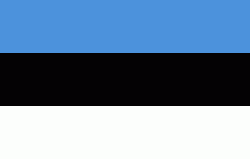Tõrva (Tõrva linn)
Tõrva (Törwa) is a town (linn) in Tõrva Parish, Valga County, southern Estonia. It is situated on the banks of Õhne River. Tõrva has an area of 4.80 km² and a population of 2800 (as of 1 January 2009), making it the second largest of the three towns in Valga County.
Tõrva borough (alev) gained its town rights on 2 July 1926.
The last mayor Maido Ruusmann was elected on 5 November 2013.
Tõrva borough (alev) gained its town rights on 2 July 1926.
The last mayor Maido Ruusmann was elected on 5 November 2013.
Map - Tõrva (Tõrva linn)
Map
Country - Estonia
 |
 |
| Flag of Estonia | |
The land of what is now modern Estonia has been inhabited by Homo sapiens since at least 9,000 BC. The medieval indigenous population of Estonia was one of the last pagan civilisations in Europe to adopt Christianity following the Papal-sanctioned Livonian Crusade in the 13th century. After centuries of successive rule by the Teutonic Order, Denmark, Sweden, and the Russian Empire, a distinct Estonian national identity began to emerge in the mid-19th century. This culminated in the 24 February 1918 Estonian Declaration of Independence from the then warring Russian and German Empires. Democratic throughout most of the interwar period, Estonia declared neutrality at the outbreak of World War II, but the country was repeatedly contested, invaded and occupied, first by the Soviet Union in 1940, then by Nazi Germany in 1941, and was ultimately reoccupied in 1944 by, and annexed into, the USSR as an administrative subunit (Estonian SSR). Throughout the 1944–1991 Soviet occupation, Estonia's de jure state continuity was preserved by diplomatic representatives and the government-in-exile. Following the bloodless Estonian "Singing Revolution" of 1988–1990, the nation's de facto independence from the Soviet Union was restored on 20 August 1991.
Currency / Language
| ISO | Currency | Symbol | Significant figures |
|---|---|---|---|
| EUR | Euro | € | 2 |
| ISO | Language |
|---|---|
| ET | Estonian language |
| RU | Russian language |















